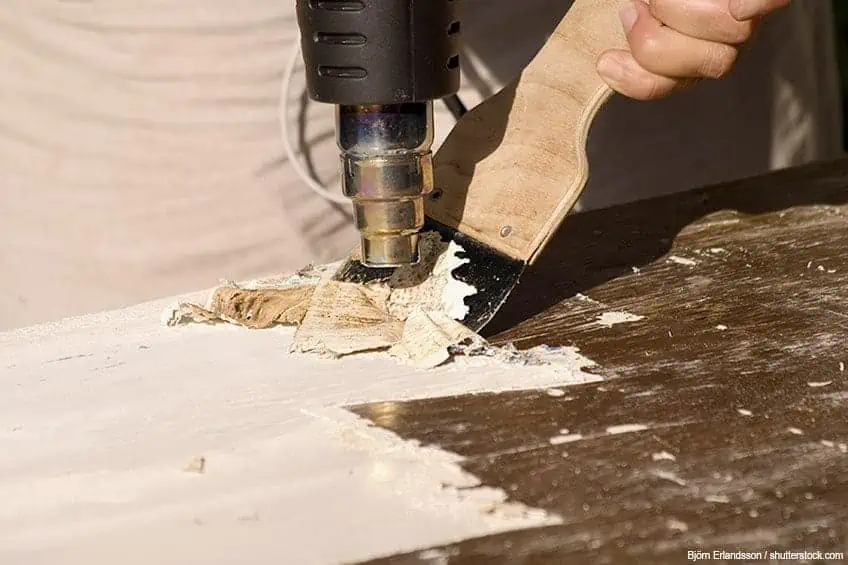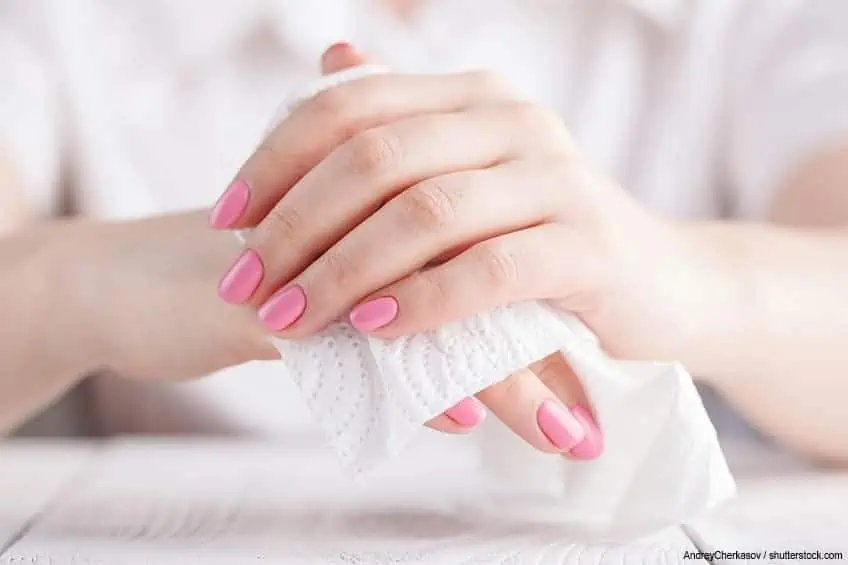How To Remove Epoxy Resin From Metal
This postal service may contain affiliate links. We may earn a small commission from purchases fabricated through them, at no boosted price to you.
Epoxy resin is an extremely versatile material and working with it offers a number of advantages. Every bit long equally the resin stays where it should. If the resin gets to places where you lot don't want it, it is sometimes very difficult to remove information technology again. During removal, the advantages of the fabric, namely the uncommonly good adhesion and the fact that epoxy is extremely hard and stable after curing, quickly turn into quite a few disadvantages. With our tips, however, it will all the same be no problem for you to remove casting resin that accidentally gets on your peel or other objects.
Table of Contents
- 1 Removal of not completely hardened Casting Resin
- 2 Removal of fully cured Epoxy on Surfaces
- two.ane Adhesive Remover
- 2.2 Universal Thinner
- ii.3 Denatured Alcohol / Ethanol
- two.four Rut Gun
- 3 Removal of Resin residues on the Skin
- three.1 Vinegar
- iii.two Acetone
- 3.3 Citrus-based waterless Hand Cleaner
Removal of non completely hardened Casting Resin
The removal of not still completely cured epoxy resin is of class much easier than if the fabric is already completely dry.
For this purpose, the use of isopropyl alcohol (too known equally isopropanol) is the most suitable pick. Epoxy can besides exist removed very well with vinegar or acetone if it has non notwithstanding dried through.

Removal of fully cured Epoxy on Surfaces
If the resin is already completely dry out, removal is much more hard. However, at that place are still some methods you can use to remove the casting resin after it has cured.
Adhesive Remover
If some epoxy has accidentally been applied to a surface, information technology can be effectively dissolved when dry out with a special agglutinative remover. Withal, this method is more suitable for small spillages on woods or plastic.
Universal Thinner
A solution of denatured alcohol and paint thinner, a then-chosen universal thinner, is also suitable for removing resin residues from surfaces.

Denatured Alcohol / Ethanol
If the epoxy resin is not yet fully cured, it can be removed very easily from the corresponding surface with denatured alcohol. To exercise this, a cloth is soaked in ethanol and the area to exist treated is then briefly wiped make clean. If the casting resin is already completely dry, the affected area must first exist softened with pigment thinner before treatment with ethanol.
Tip: A cheap alternative to the expensive pure alcohol is methylated spirits. The event is practically the same and the spirit tin can be used for many other purposes. When using methylated spirits, withal, notation that information technology is extremely flammable.
Heat Gun
Fully cured epoxy can exist extremely stubborn to remove, but a heat gun is a very useful tool help with this. The dried resin is softened by the hot air and tin can then be removed mechanically, e.g. with a spatula or pigment scraper. Hot air guns with temperature command have proven to be effective in this procedure, as epoxy resins usually soften from around 200 ° C. We recommend that only minor sections of the resin to exist removed are heated at a time and then removed.
As always when working with epoxy resin, your health should be your first priority. Wear gloves to protect against burns and a respirator to foreclose inhalation of the vapors generated by the heat.

Removal of Resin residues on the Skin
Vinegar
Vinegar is a very effective remedy if some epoxy resin has accidentally landed on your peel. This agent even helps when the resin is already cured. Put the vinegar on a cloth and soak the expanse to be cleaned on your skin with it. Once the resin is softened it can be hands removed.
Acetone
The utilize of acetone is also a very constructive means of removing casting resin from the skin. Like vinegar, acetone has the reward that yous oftentimes have it in your house anyway and practice not have to specially buy it. To remove the resin, soak a cotton swab with acetone and rub it into the appropriate expanse. The resin softens in this way and can be easily removed.
Lookout your safety here too. The vapors contained in acetone should non exist inhaled for an unnecessarily long time. Therefore, you should only use this production in rooms that you can ventilate properly. Since acetone is extremely combustible, make sure that there are no open flames in the vicinity.
Acetone removes a lot of moisture from the skin. Wash your hands thoroughly with soap and water after removing the resin. A moisturizing cream quickly makes up for the loss.
Tip: As blast shine remover consists mainly of acetone (exception: there are some that may note "acetone-free" on the packaging) information technology is as well suitable for removing epoxy resin from the skin if pure acetone is not available.

Citrus-based waterless Hand Cleaner
The removal of resin residues with vinegar or acetone is an extreme strain on the skin. A much more skin-friendly alternative is a citrus-based foam cleaner. This is also much less stressful for the respiratory tract. To clean it, only apply some of the mitt cleaner to the affected area, rub it in thoroughly, and then wash the foam off with water. The only disadvantage of this method is that it is much less effective than the other two methods.
How To Remove Epoxy Resin From Metal,
Source: https://acrylgiessen.com/en/how-to-remove-epoxy-resin/
Posted by: joneswarry1979.blogspot.com


0 Response to "How To Remove Epoxy Resin From Metal"
Post a Comment